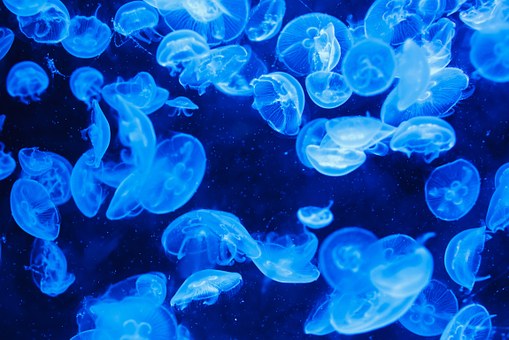Thought to roam the waters before the dinosaurs roamed our lands, jellyfish are one of the oldest marine species in existence. There are more than 350 different types of jellyfish throughout the world, ranging from harmless jellyfish to those with powerful, painful and sometimes even deadly stings. The good news is that most jellyfish in New Smyrna Beach has a mild sting, if any at all, and are mostly just a nuisance.
Due to certain winds and currents, jellyfish typically invade Florida beaches a few times a year. Strong weather systems and unusual tidal activity can push jellyfish closer to shore, and warmer temperatures, as well as overfishing, can increase jellyfish numbers. Warmer seas help jellyfish reproduce faster because it elongates their mating season. Overfishing eliminates predators that would normally keep jellyfish at bay. Jellyfish also wash ashore and quickly dry out and die as part of their normal life cycle. Just be careful not to step on any that have washed up because they can sting you, even if they are not still alive.
This year, it seems that we have had more than our share of encounters with jellyfish in Central Florida, but in actuality, there really have been no higher numbers of jellyfish, just higher numbers of beachgoers – increasing the chances of jellyfish stings.
There are precautions in place to keep us safe from jellyfish stings. Purple flags are placed on the beach to warn beachgoers if jellyfish happen to come out in numbers, which doesn’t happen very often.
If you are stung by a jellyfish, in most instances, the burn will subside in minutes. Washing the area with vinegar also helps. Don’t treat a jellyfish sting with alcohol. It will only make it worse.




